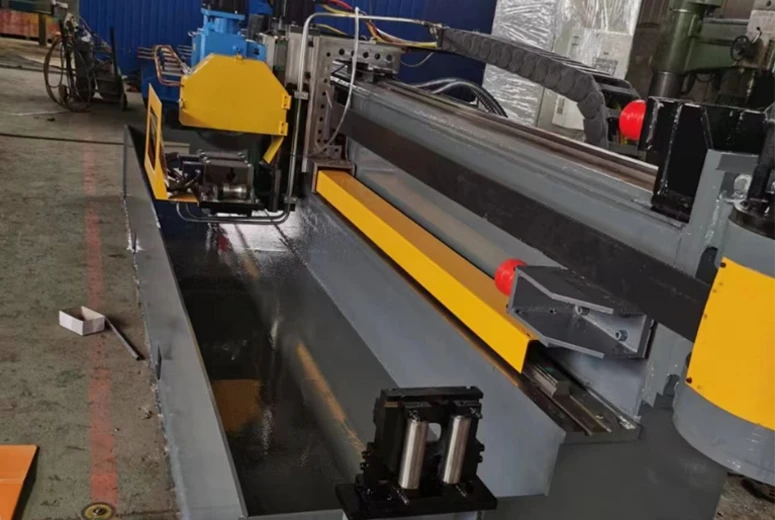Steel Pipe Production Equipment for Efficient Manufacturing Processes
The Evolution of Steel Pipe Manufacturing Machines A Technological Overview
Steel pipes are indispensable in various industries, playing a crucial role in the construction, oil, gas, and water transport sectors. The manufacturing of steel pipes has undergone significant advancements in technology over the years, transforming the methods and machinery used in production. This article explores the evolution of steel pipe manufacturing machines, the processes involved, and the latest innovations shaping the industry.
Historical Context
The history of steel pipe manufacturing dates back to the 19th century when processes were rudimentary, relying heavily on manual labor. The introduction of mechanized processes in the early 20th century marked the beginning of a transformation. Early machines used basic techniques like the piercing mill and mandrel mill to create seamless pipes, which significantly increased production efficiency and reduced labor costs.
Key Manufacturing Processes
Modern steel pipe manufacturing involves several key processes, each requiring specialized machines
1. Raw Material Preparation The process starts with the selection of raw materials, primarily steel billets or coils. Steel is melted and cast into these shapes, which are then prepared for further processing.
2. Forming and Rolling The first step in pipe creation is forming. In this stage, hot-rolled steel is passed through a series of rollers in a process known as hot rolling. This method allows the steel to be shaped into a tubular form. For seamless pipes, the piercing mill technique is employed, where solid bars are pierced to create a hollow section.
3. Welding For welded pipes, various welding techniques, including submerged arc welding (SAW) and electric resistance welding (ERW), are used. The welding machines are designed to ensure consistent seams and strong joints, which are vital for the durability of the pipes.
4. Sizing and Straightening After forming and welding, the pipes undergo sizing. This process adjusts the dimensions of the pipes to meet industry standards. The steel pipes are also straightened using specialized machines that ensure uniformity.
steel pipe manufacturing machine

5. Heat Treatment Depending on the application, heat treatment may be required to enhance the mechanical properties of the pipes. This process involves controlled heating and cooling to improve strength and resistance to corrosion.
6. Coating and Finishing The final steps involve surface treatment and coating to protect the pipes from environmental factors. Various coatings, such as galvanization or epoxy, are applied to enhance durability and longevity.
Innovations in Technology
With rapid advancements in technology, modern steel pipe manufacturing machines are becoming more efficient and automated. Here are a few notable innovations
- Automation and Robotics The introduction of robotics in the manufacturing process has streamlined operations, reducing human error and increasing production rates. Automated systems manage everything from material handling to quality inspection.
- Smart Manufacturing Integration of IoT (Internet of Things) technology allows manufacturers to collect data from machines in real time. This data is analyzed to predict maintenance needs and optimize production schedules, thus minimizing downtime.
- Advanced Quality Control High-tech inspection machines equipped with laser scanning or ultrasonic testing ensure that every pipe meets stringent quality standards. Non-destructive testing methods help in identifying flaws without compromising the integrity of the product.
- Eco-Friendly Practices Sustainability has become a significant focus in manufacturing. Modern machines are designed to minimize energy consumption and reduce waste, contributing to a more eco-friendly production process.
Conclusion
The evolution of steel pipe manufacturing machines reflects the broader technological advancements in the manufacturing sector. From initial manual processes to highly automated and smart manufacturing systems, the steel pipe industry has demonstrated remarkable growth. As technology continues to advance, it is likely that steel pipe manufacturing will become even more efficient, cost-effective, and environmentally responsible, ensuring its vital role in supporting infrastructure and industrial needs for years to come.
-
High Frequency Straight Seam Welded Pipe Production Line-BzZhou Xinghua Machinery Equipment Manufacturing Co., LTD.|Precision Welding, High EfficiencyNewsJul.30,2025
-
High Frequency Straight Seam Welded Pipe Production Line|BzZhou Xinghua|Precision Welding&EfficiencyNewsJul.30,2025
-
High Frequency Straight Seam Welded Pipe Production Line - BzZhou Xinghua|Precision Engineering&EfficiencyNewsJul.30,2025
-
High-Frequency Straight Seam Welded Pipe Production Line-BzZhou Xinghua Machinery Equipment Manufacturing Co., LTD.NewsJul.30,2025
-
High-Frequency Straight Seam Welded Pipe Production Line-BzZhou Xinghua Machinery Equipment Manufacturing Co., LTD.|Precision Manufacturing, High EfficiencyNewsJul.30,2025
-
High Frequency Straight Seam Welded Pipe Production Line-BzZhou Xinghua Machinery Equipment Manufacturing Co., LTD.|Precision Steel Pipe Manufacturing&Industrial EfficiencyNewsJul.29,2025


